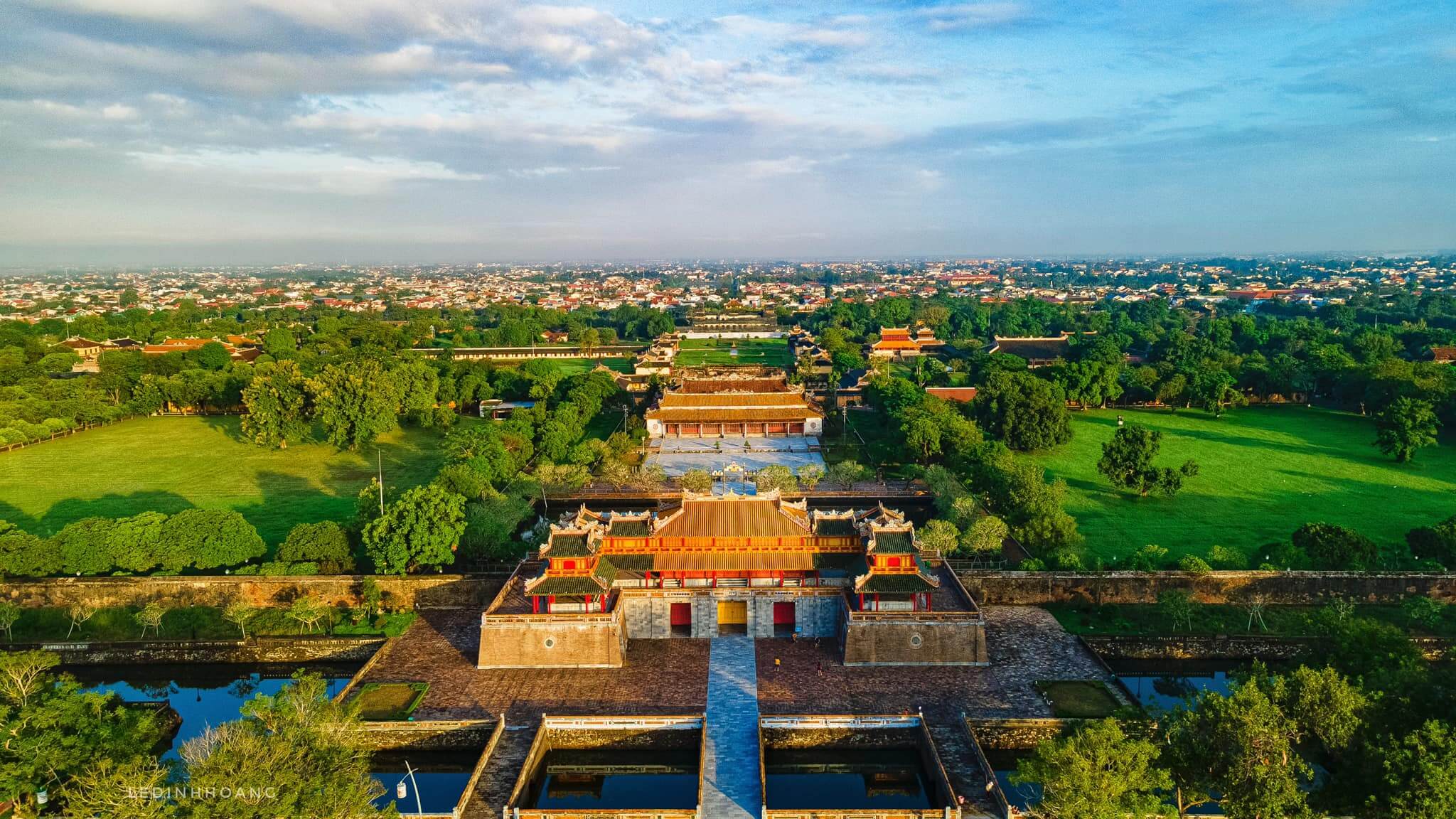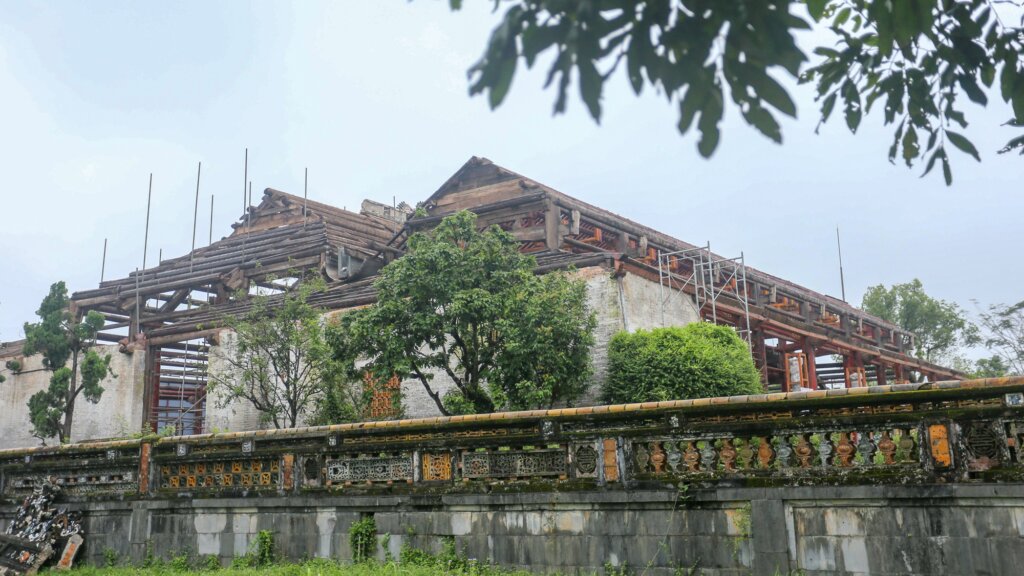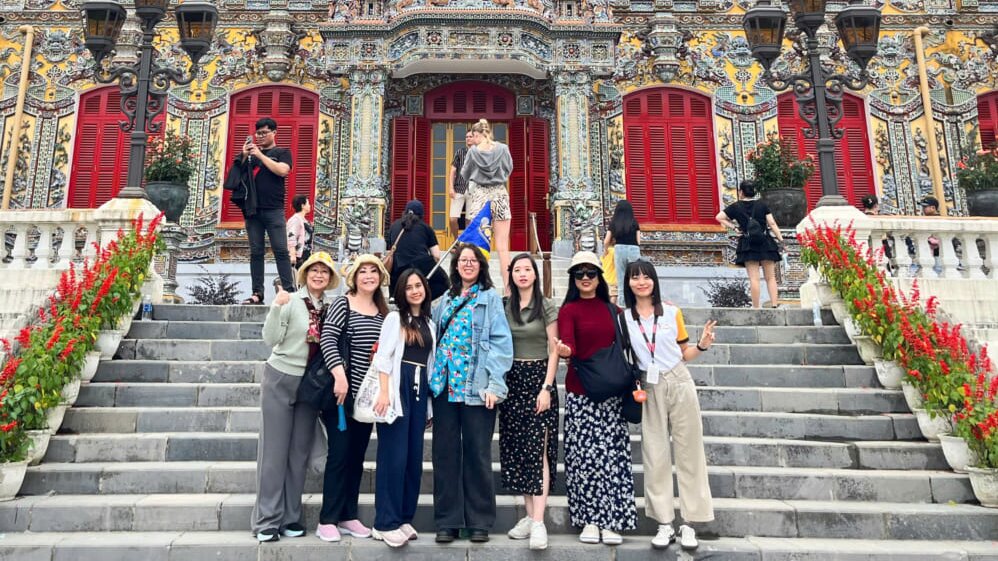Discover the Hidden Beauty of VIETNAM
Read moreEpic travel adventures that linger in your heart
Read more 8 May, 2025 0 Comment 443 Views
8 May, 2025 0 Comment 443 ViewsA Complete Travel Guide to Hue Imperial City by Local Experts
Nestled along the poetic Perfume River, Hue Imperial City is a breathtaking testament to Vietnam’s rich royal heritage. As the former capital of the Nguyen Dynasty, this sprawling fortress served as the political, cultural, and religious center of Vietnam for over a century.
Today, it stands as a UNESCO World Heritage Site, drawing history enthusiasts, culture seekers, and travelers eager to explore its ancient palaces, grand temples, and hidden courtyards. In this guide, you'll discover everything you need to plan your visit, from must-see attractions to essential travel tips.
1. Introduction to Hue Imperial City
Hue Imperial City (Kinh Thành Huế) is one of Vietnam’s most historically significant landmarks. As the former capital of the Nguyen Dynasty (1802–1945), it served as the political, cultural, and religious center of Vietnam for nearly 150 years. Recognized as a UNESCO World Heritage Site in 1993, the complex attracts history lovers, photographers, and cultural enthusiasts from around the world.
Covering 520 hectares, the Imperial City is a massive walled fortress consisting of three key areas:
- The Citadel: The outer defensive wall protecting the entire complex.
- The Imperial City: The central area where official ceremonies and governance took place.
- The Forbidden Purple City: The emperor’s private residence, restricted to only the royal family and selected attendants.

The Hue Imperial Citadel was recognized as a UNESCO World Heritage Site in 1993 2. History of Hue Imperial City
2.1 The Founding of the Nguyen Dynasty
- In 1802, Emperor Gia Long unified Vietnam and chose Hue as the national capital.
- Construction of the Imperial City began in 1804 and continued for over 30 years.
- The design was influenced by Chinese feng shui principles, with a strategic location on the Perfume River, surrounded by mountains for natural defense.
2.2 The Role of Hue Imperial City in Vietnamese History
- It was home to 13 Nguyen emperors, who ruled Vietnam from 1802 to 1945.
- The city witnessed major historical events, including conflicts with French colonial forces and Japan.
- In 1945, Emperor Bao Dai abdicated, marking the end of imperial rule and the transition to modern Vietnam.
2.3 Damage and Restoration Efforts
- The Battle of Hue (1968) during the Vietnam War caused severe destruction, with many palaces and temples reduced to ruins.
- Restoration efforts began in the 1990s, and today, about 40 structures have been restored.
- Ongoing preservation projects continue to bring the city’s former grandeur back to life.

Proceed with the restoration of the palaces 3. Things to Do in Hue Imperial City
3.1 Explore the Main Gate – Ngo Mon Gate
The Ngo Mon Gate is the grand entrance to the Imperial City, once used exclusively by the emperor. It features a five-part structure with the elaborate Thai Hoa Palace directly behind it. Visitors can admire the intricate architecture and take stunning photographs.
What to do here:
- Walk across the bridge leading to the gate and admire its impressive structure.
- Take panoramic photos of the entrance and its reflection in the surrounding water.
- Observe the balcony from where the emperor once addressed the public.
Tip: Arrive early to avoid crowds and get the best lighting for photos.

The Ngo Mon Gate is the grand entrance to the Imperial City 3.2 Visit Thai Hoa Palace – The Emperor’s Audience Hall
This palace was the throne hall where emperors held grand ceremonies and received officials. It is a masterpiece of traditional Vietnamese wooden architecture, with intricate dragon carvings symbolizing power and prosperity.
What to do here:
- Observe the symmetrical wooden pillars and detailed lacquerwork.
- Learn about royal ceremonies and ancient court traditions.
- Stand in the exact spot where emperors once ruled over the kingdom.
Note: Photography inside may be restricted; please check the on-site regulations.
3.3 Discover the Forbidden Purple City
Modeled after Beijing’s Forbidden City, this area was once reserved for the emperor, his family, and close servants. Though it suffered heavy damage during wars, restoration efforts have brought parts of it back to life.
What to do here:
- Walk through the remaining gates and pavilions.
- Imagine the daily life of emperors and concubines.
- See the reconstruction efforts and learn about historical preservation.
Note: Some areas are still under restoration; visitors should follow the guidelines while exploring.

Forbidden Purple City, Modeled after Beijing’s Forbidden City 3.4 Admire the Nine Dynastic Urns
These large bronze urns, each representing a different Nguyen emperor, are located in front of The Mieu Temple. The urns are decorated with intricate engravings that symbolize Vietnam’s geography and history.
Interesting Fact: The urns were cast in 1835 and weigh up to 2,600 kg each!
What to do here:
- Take close-up photos of the urns, each uniquely designed for an emperor.
- Observe the detailed engravings depicting mountains, rivers, and historical events.
3.5 Visit The Mieu Temple and Hien Lam Pavilion
These sacred sites house ancestral altars dedicated to the Nguyen Dynasty emperors. The Mieu Temple is the most revered structure in the Imperial City, while Hien Lam Pavilion serves as a memorial to the dynasty’s achievements.
What to do here:
- Offer incense and pay respects to past emperors.
- Observe the architectural style unique to Vietnamese imperial temples.
- Learn about the historical significance of each emperor commemorated here.
Note: When entering worship areas, visitors should maintain silence and wear appropriate attire.
3.6 Enjoy the Tranquility of Royal Gardens and Lakes
The Imperial City features lush gardens and lakes, offering a peaceful retreat from the crowded tourist areas.
Best spots for relaxation:
- Co Ha Garden – A hidden gem with beautiful bonsai trees and stone pathways.
- Truong Sanh Palace Garden – A scenic area perfect for taking a break and soaking in the historical atmosphere.
- Tinh Tam Lake – Once a leisure area for the royal family, now a picturesque spot with lotus flowers blooming in summer.
Note: This is a quiet area, ideal for relaxation and enjoying the ancient ambiance.
4. Important Travel Tips for Visiting Hue Imperial City
4.1 Ticket Prices and Where to Buy Tickets
Tickets can be purchased at the entrance gate or online through official websites.
- Adult: 200,000 VND (~$8.50)
- Children (7-12 years old): 40,000 VND (~$1.70)
- Students (with valid ID): 100,000 VND (~$4.25)
4.2 Best Time to Visit
The ideal time to visit Hue Imperial City is from March to August, when the weather is warm and dry. Avoid the rainy season (September – January) as the city experiences heavy rainfall and occasional flooding.
4.3 Dress Code and Etiquette
Since this is a historical and spiritual site, visitors should dress modestly.
- Avoid shorts, tank tops, and revealing outfits.
- Comfortable walking shoes are recommended as the site is vast.
4.4 How to Get to Hue Imperial City
Hue Imperial City is located in the center of Hue City and is easily accessible by various means:
- By taxi or Grab: Convenient and affordable (~50,000 VND from most city hotels).
- By bicycle: A great way to explore Hue at a leisurely pace.
- By guided tour: Opt for the Daily Hue Tour by Venus Travel, which provides expert historical insights, convenient transport, and a structured itinerary to maximize your experience. This tour ensures you visit key attractions efficiently and learn in-depth about Hue’s royal heritage from professional guides.
4.5 Additional Attractions Nearby
While in Hue, consider visiting these other historical sites:
- Thien Mu Pagoda: A stunning seven-story pagoda overlooking the Perfume River.
- Tombs of the Nguyen Emperors: Such as Minh Mang Tomb, Tu Duc Tomb, and Khai Dinh Tomb.
- Dong Ba Market: The largest traditional market in Hue, perfect for shopping and street food tasting.

Thien Mu Pagoda - A Cultural and Spiritual Icon of Hue 4.6 Practical Tips for Visitors
- Arrive early to avoid large tour groups and enjoy a more peaceful experience.
- Bring sunscreen, a hat, and water as walking under the sun can be tiring.
- Hire a local guide or join a tour for deeper historical insights.
- Download an offline map as the site is large and easy to get lost in.
- Check event schedules as special cultural performances occasionally take place in the Imperial City.
Hue Imperial City is a must-visit destination for anyone interested in Vietnamese history and royal culture. Whether you’re exploring its grand palaces, learning about ancient traditions, or simply admiring the stunning architecture, this UNESCO site offers an unforgettable experience.
5. Explore Hue Imperial City with Venus Travel
For an unforgettable journey through Hue, we, as local experts, offer daily tours that go beyond the Imperial City, taking you to must-visit attractions that showcase the city's rich history and charm. Whether you choose a group tour or a private experience, our well-crafted itineraries ensure you make the most of your visit.

Explore Hue Imperial City with Venus Travel With thousands of five-star reviews, Venus Travel guarantees a seamless, insightful, and enriching adventure, guided by professionals who bring Hue’s cultural heritage to life.
And this is all you should know about Vietnam Travel Visa (2025 updated): https://venusvietnamtravel.com/visa-free-travel-vietnam-2025/
For authentic travel advice and tour planning by Vietnam local experts, feel free to contact us 24/7! Don’t forget to follow us for the latest updates on Vietnam travel news and local tips!
- Office 1: 14 An Nhon 10, Da Nang City, Vietnam
- Office 2: 429A Cua Dai St, Hoi An City, Viet Nam
- Email: venustravelvietnam@gmail.com
- Instagram/Youtube/Tiktok/Facebook: venustravel_vietnam
- Website: www.venusvietnamtravel.com
- Travelers' Choice in 2024 on Tripadvisor: https://www.tripadvisor.com.vn/Attraction_Review-g298082-d12261731-Reviews-Venus_Travel-Hoi_An_Quang_Nam_Province.html
- Top Rated on GetYourGuide: www.getyourguide.com/s/?q=supplier:87597
- Whatsapp/Zalo/Viber: (+84) 905 775 088 (English)/ (+84) 964 056 190 (Chinese)
0 0 votesGuide0 0 votesValue For Money0 0 votesOrganization0 0 votesServiceSubscribe0 FeedbackOldestNewest Most VotedInline FeedbacksView all commentsRecent Post
- Mui Ne in September: Weather, Best Things to Do & Local Tips
- Cu Chi Tunnels in September: Weather, Best Activities & Tips
- Dalat in September: Weather, Activities & Travel Tips by Locals
- Ha Giang Loop in September: Weather, Activities and Local Tips
- Hoi An in September: Weather, Top Things to Do and Local Tips
Tag
Related tours
Vietnam Signature 14 days trip
14 Days From $1012 / person 4.8(236)AFTERNOON BA NA HILLS – GOLDEN BRIDGE & DRAGON BRIDGE BY NIGHT TOUR
Full Day From $68 / person 5()Marble Mountains – Hoi An Ancient Town Morning Tour (Private tour)
Half Day From $0 / person 4.8(236)Ha Noi – Halong Bay – Ninh Binh (Hoa Lu – Tam Coc)
5 Days From $0 / person 4.8(236)Halong Bay Full-Day Deluxe Trip
Full Day From $59 / person 4.8(236)Same Category
Cat Ba in September: Weather Guide, Activities & Local Tips
0 Comment 25 Views
Mui Ne in September: Weather, Best Things to Do & Local Tips
0 Comment 129 Views
Cu Chi Tunnels in September: Weather, Best Activities & Tips
0 Comment 75 Views
Dalat in September: Weather, Activities & Travel Tips by Locals
0 Comment 366 Views
Ha Giang Loop in September: Weather, Activities and Local Tips
0 Comment 241 Views
Hoi An in September: Weather, Top Things to Do and Local Tips
0 Comment 219 Views
